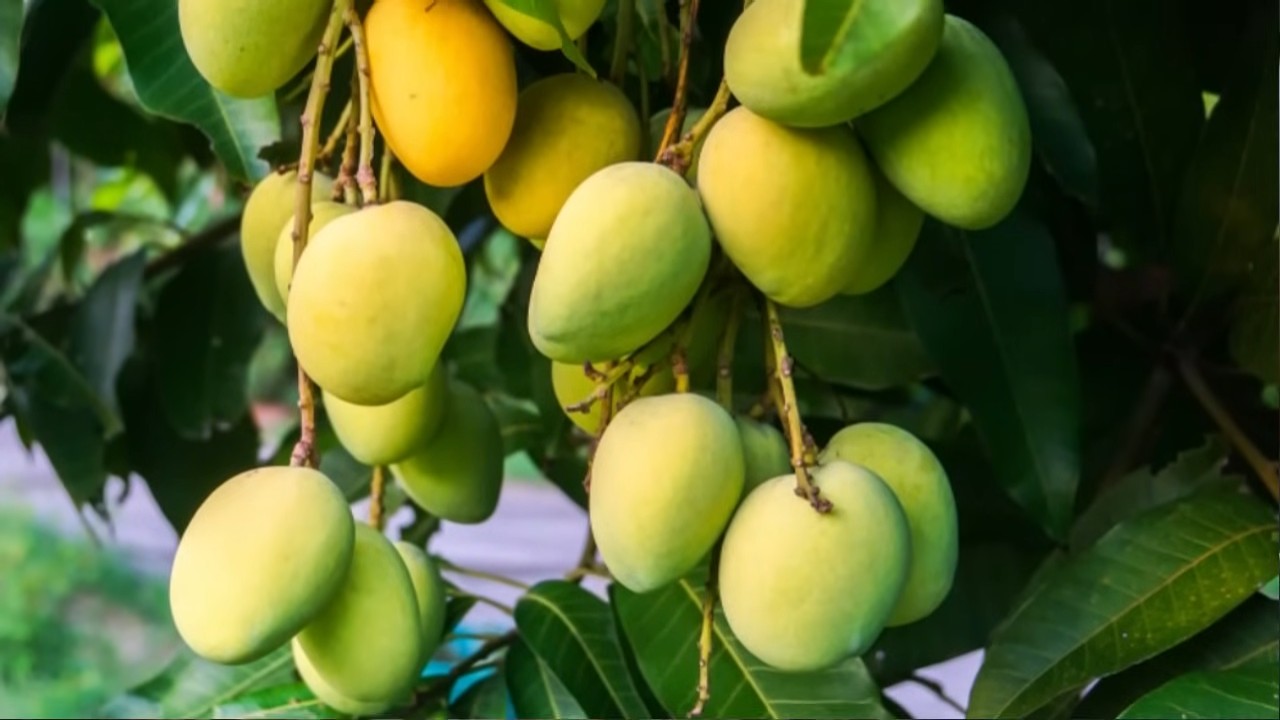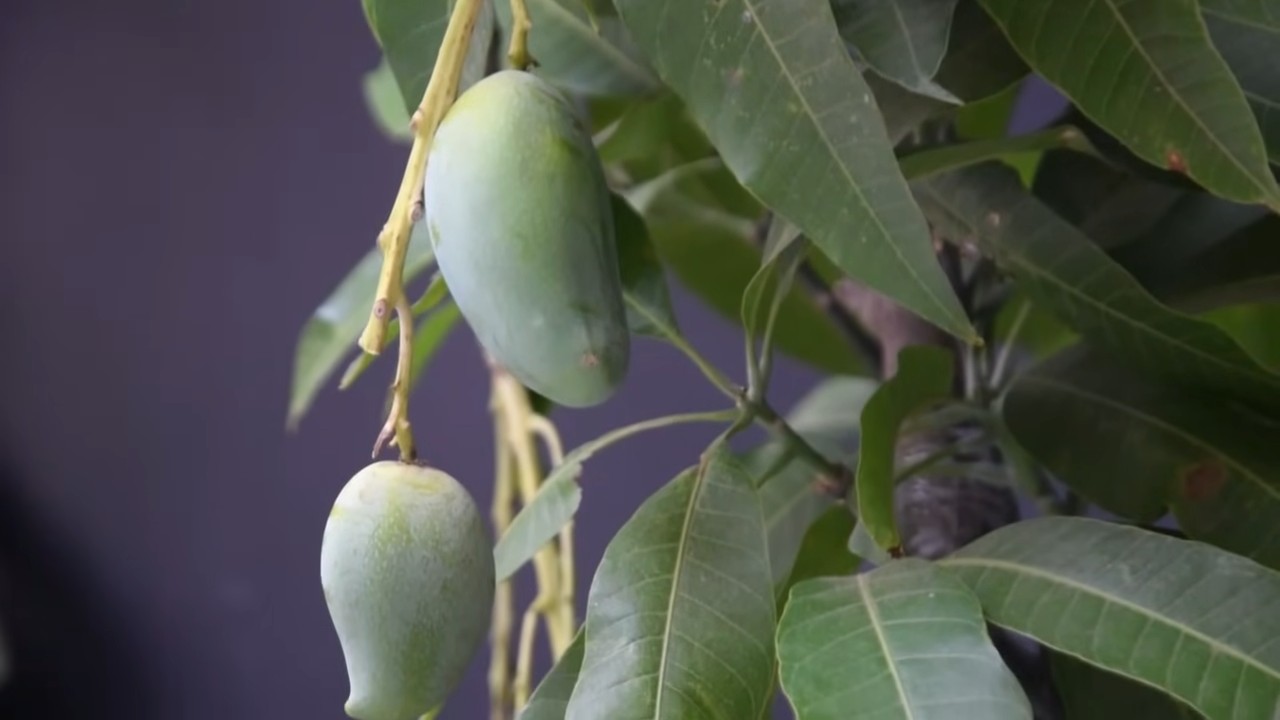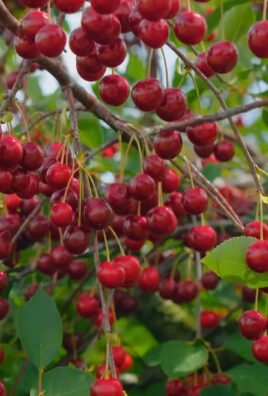Growing Mangoes at Home might seem like a tropical dream reserved for sun-drenched orchards, but I’m here to tell you that with a few clever tricks and a dash of DIY spirit, you can cultivate your own juicy mangoes, even if you don’t live in the tropics!
For centuries, mangoes have held a special place in cultures around the world, symbolizing prosperity, love, and even immortality in some traditions. From ancient India, where they were first cultivated over 4,000 years ago, to the vibrant markets of Southeast Asia and Latin America, the mango’s sweet, tangy flavor has captivated palates and inspired countless culinary creations.
But why should you bother with the effort of growing your own? Well, imagine biting into a perfectly ripe mango, bursting with flavor, knowing that you nurtured it from seed to fruit. Beyond the sheer satisfaction, growing mangoes at home allows you to control the growing process, ensuring your fruit is free from harmful pesticides and bursting with natural goodness. Plus, let’s be honest, who wouldn’t want to impress their friends and family with their homegrown tropical bounty? This DIY guide will equip you with the knowledge and simple hacks you need to successfully cultivate these delicious fruits, regardless of your gardening experience. Get ready to embark on a rewarding journey, transforming your backyard into a miniature mango paradise!

Growing Mangoes at Home: A DIY Guide to Tropical Delights
Okay, so you want to grow mangoes at home? Awesome! It’s totally doable, even if you don’t live in the tropics. It takes a little patience and some know-how, but trust me, biting into a mango you grew yourself is one of the most rewarding experiences ever. I’m going to walk you through everything you need to know, from choosing the right variety to dealing with pests. Let’s get started!
Choosing Your Mango Variety
First things first, you need to pick the right mango variety. Not all mangoes are created equal, especially when it comes to growing them in containers or in climates that aren’t perfectly tropical. Here’s what to consider:
* Dwarf Varieties: These are your best bet if you’re planning on growing your mango in a pot. They stay smaller and are easier to manage. Some popular dwarf varieties include:
* ‘Nam Doc Mai’: This Thai variety is known for its sweet, fiberless fruit and relatively small size. It’s a great choice for beginners.
* ‘Cogshall’: Another excellent dwarf variety, ‘Cogshall’ produces beautiful, reddish-orange fruit with a rich, sweet flavor.
* ‘Julie’: This is a very compact dwarf mango, perfect for container growing. The fruit is small to medium-sized and has a slightly spicy flavor.
* Climate Considerations: If you live in an area with cooler winters, you’ll need to choose a variety that can tolerate some cold. ‘Glenn’ and ‘Tommy Atkins’ are known for being a bit more cold-hardy than some other varieties.
* Grafted vs. Seedling: Always, always, always go for a grafted mango tree. Seedling mangoes can take years (sometimes 10 or more!) to produce fruit, and the fruit might not even be the same as the mango you got the seed from. Grafted trees, on the other hand, are guaranteed to produce fruit of the desired variety, and they’ll do it much sooner (usually within 3-5 years).
Getting Started: Planting Your Mango Tree
Alright, you’ve got your mango tree. Now it’s time to get it planted! Here’s how:
1. Choose the Right Pot (if container growing): If you’re growing your mango in a container, you’ll need a large pot. Start with a pot that’s at least 20 inches in diameter and depth. Mangoes have deep roots, so the bigger the better. Make sure the pot has good drainage holes.
2. Prepare the Soil: Mangoes like well-draining soil that’s slightly acidic. A good mix is equal parts potting soil, perlite, and compost. The perlite helps with drainage, and the compost provides nutrients.
3. Planting Time:
* Gently remove the mango tree from its nursery pot. Be careful not to damage the roots.
* Loosen the roots a bit with your fingers. This will encourage them to grow outwards into the new soil.
* Place the tree in the center of the pot, making sure the top of the root ball is level with the soil surface.
* Fill in the pot with your soil mixture, gently tamping it down as you go.
* Water the tree thoroughly after planting.
4. Location, Location, Location: Mangoes need lots of sunlight – at least 6-8 hours per day. Choose a sunny spot in your yard or on your patio. If you live in a colder climate, you might want to consider a spot where you can easily move the tree indoors during the winter.
Caring for Your Mango Tree
Now that your mango tree is planted, it’s time to give it some TLC. Here’s what you need to do:
1. Watering: Water your mango tree regularly, especially during the growing season (spring and summer). Let the soil dry out slightly between waterings. Overwatering can lead to root rot, so be careful not to drown your tree. During the winter, you can reduce watering frequency.
2. Fertilizing: Mangoes are heavy feeders, so you’ll need to fertilize them regularly. Use a balanced fertilizer (like a 10-10-10) every 2-3 months during the growing season. You can also use a fertilizer specifically formulated for fruit trees.
3. Pruning: Pruning helps to keep your mango tree healthy and productive. Prune your tree in late winter or early spring, before new growth begins. Remove any dead, damaged, or crossing branches. You can also prune to shape the tree and encourage branching.
4. Protecting from Cold: If you live in a colder climate, you’ll need to protect your mango tree from frost. If it’s in a container, you can move it indoors. If it’s planted in the ground, you can wrap the trunk with burlap or blankets. You can also use frost cloth to cover the entire tree.
5. Pollination: Mangoes are usually pollinated by insects, but if you’re growing your tree indoors or in an area with few pollinators, you might need to hand-pollinate. Use a small paintbrush to transfer pollen from one flower to another.
Dealing with Pests and Diseases
Like all plants, mangoes can be susceptible to pests and diseases. Here are some common problems and how to deal with them:
1. Mango Hoppers: These tiny insects suck sap from the leaves and flowers, causing them to drop. You can control mango hoppers with insecticidal soap or neem oil.
2. Mealybugs: These white, cottony insects also suck sap from the leaves and stems. You can control mealybugs with insecticidal soap or by wiping them off with a cotton swab dipped in rubbing alcohol.
3. Scale: These small, armored insects attach themselves to the leaves and stems. You can control scale with horticultural oil or by scraping them off with your fingernail.
4. Anthracnose: This fungal disease causes dark spots on the leaves, flowers, and fruit. You can prevent anthracnose by providing good air circulation and avoiding overhead watering. If your tree does get anthracnose, you can treat it with a fungicide.
5. Powdery Mildew: This fungal disease causes a white, powdery coating on the leaves. You can prevent powdery mildew by providing good air circulation and avoiding overhead watering. If your tree does get powdery mildew, you can treat it with a fungicide.
Harvesting Your Mangoes
Okay, this is the exciting part! After all your hard work, it’s time to harvest your mangoes. Here’s how to know when they’re ready:
1. Color Change: The skin of the mango will change color from green to yellow, orange, or red, depending on the variety.
2. Softness: The mango will feel slightly soft to the touch.
3. Aroma: The mango will have a sweet, fruity aroma.
4. Easy Detachment: The mango should detach easily from the tree with a gentle tug.
Once your mangoes are ripe, you can harvest them and enjoy them fresh, or use them in your favorite recipes.
Troubleshooting Common Issues
Even with the best care, you might run into some problems along the way. Here are a few common issues and how to fix them:
* No Fruit Production: If your mango tree isn’t producing fruit, it could be due to a number of factors, including:
* Age: Grafted mango trees usually start producing fruit within 3-5 years, but seedling trees can take much longer.
* Lack of Sunlight: Mangoes need at least 6-8 hours of sunlight per day to produce fruit.
* Poor Pollination: If you’re not getting good pollination, you might need to hand-pollinate.
* Nutrient Deficiency: Make sure you’re fertilizing your tree regularly with a balanced fertilizer.
* Cold Weather: Mangoes are sensitive to cold, and frost can damage the flowers and prevent fruit production.
* Leaf Drop: Leaf drop can be caused by a number of factors, including:
* Overwatering: Overwatering can lead to root rot, which can cause leaf drop.
* Underwatering: Underwatering can also cause leaf drop, especially during hot weather.
* Pest Infestation: Pests like mango hoppers and mealybugs can suck sap from the leaves, causing them to drop.
* Disease: Diseases like anthracnose and powdery mildew can also cause leaf drop.
* Fruit Splitting: Fruit splitting can be caused by uneven watering. Make sure you’re watering your tree consistently, especially during dry spells.
Propagating Mango Trees (Advanced)
If you’re feeling adventurous, you can try propagating your own mango trees. The most common

Conclusion
So, there you have it! Growing mangoes at home, while it might seem daunting at first, is absolutely achievable with a little patience, the right knowledge, and a dash of green-thumb enthusiasm. We’ve walked you through the essentials, from selecting the perfect variety for your climate to nurturing your young tree through its formative years. The satisfaction of harvesting your own, sun-ripened mangoes, bursting with flavor and sweetness, is an experience that store-bought fruit simply cannot replicate.
This isn’t just about saving money (though that’s a definite perk!). It’s about connecting with nature, understanding the life cycle of a plant, and enjoying the fruits (literally!) of your labor. Imagine the pride you’ll feel serving your homemade mango salsa, chutney, or even just a simple sliced mango to friends and family, knowing that you nurtured it from a sapling.
Why is this DIY mango growing trick a must-try? Because it empowers you to take control of your food source, reduce your carbon footprint, and enjoy the unparalleled taste of homegrown produce. Plus, it’s a fantastic learning experience for kids and adults alike, fostering a deeper appreciation for the natural world.
Don’t be afraid to experiment! Try different grafting techniques, explore organic pest control methods, or even create your own custom fertilizer blend. Consider planting companion plants around your mango tree to attract beneficial insects and improve soil health. You could also try growing mangoes in containers if you have limited space, just be sure to choose a dwarf variety and provide adequate drainage. Another variation is to try different methods of propagation, such as air layering, to create new mango trees from existing branches.
We encourage you to embark on this exciting journey of growing mangoes at home. It’s an investment of time and effort, but the rewards are immeasurable. Don’t be discouraged by initial setbacks; every gardener faces challenges. The key is to learn from your mistakes, adapt your approach, and never give up on your dream of harvesting your own delicious mangoes.
Once you’ve successfully harvested your first crop, we’d love to hear about your experience! Share your photos, tips, and stories in the comments below. Let’s create a community of home mango growers, supporting each other and celebrating our successes. Your insights could inspire others to take the plunge and discover the joy of growing their own food. So, grab your gardening gloves, choose your mango variety, and get ready to experience the magic of growing mangoes at home! Let us know what variety you are growing, and what challenges you faced. We are here to help!
Frequently Asked Questions (FAQ)
Q: What is the best climate for growing mangoes?
A: Mangoes thrive in warm, tropical and subtropical climates. They need temperatures above 60°F (15°C) and are sensitive to frost. Ideally, they need a distinct dry season to encourage flowering and fruit production. If you live in a colder climate, you can grow mangoes in containers and bring them indoors during the winter months. However, fruit production may be limited.
Q: Which mango variety is best for home growing?
A: The best variety depends on your climate and personal preferences. Some popular choices for home growing include:
* **Tommy Atkins:** A widely available variety known for its good flavor and disease resistance.
* **Haden:** A flavorful and aromatic variety, but can be susceptible to disease.
* **Kent:** A late-season variety with excellent flavor and fiberless flesh.
* **Keitt:** Another late-season variety that is known for its large size and excellent storage life.
* **Alphonso:** Highly prized for its rich, sweet flavor, but can be challenging to grow in some climates.
* **Glenn:** A good choice for smaller spaces as it tends to be more compact.
Consider the size of the mature tree, the fruit’s flavor profile, and its resistance to common diseases in your area when making your selection. Dwarf varieties are also available for container growing.
Q: How long does it take for a mango tree to bear fruit?
A: Grafted mango trees typically start bearing fruit within 3-5 years. Seedling trees can take much longer, sometimes 8-10 years or more. Proper care, including adequate watering, fertilization, and pruning, can help to speed up the fruiting process.
Q: How often should I water my mango tree?
A: Young mango trees need regular watering, especially during dry periods. Water deeply and less frequently, allowing the soil to dry out slightly between waterings. Mature trees are more drought-tolerant but still benefit from occasional watering during extended dry spells. Avoid overwatering, as this can lead to root rot.
Q: What kind of fertilizer should I use for my mango tree?
A: Use a balanced fertilizer specifically formulated for fruit trees. Look for a fertilizer with a higher phosphorus content to promote flowering and fruit production. Fertilize young trees every 2-3 months during the growing season. Mature trees can be fertilized 2-3 times per year, before flowering, after fruit set, and after harvest. Always follow the manufacturer’s instructions for application rates.
Q: How do I protect my mango tree from pests and diseases?
A: Regularly inspect your tree for signs of pests or diseases. Common pests include mango hoppers, scales, and mealybugs. Diseases can include anthracnose and powdery mildew. Use organic pest control methods whenever possible, such as neem oil or insecticidal soap. Prune your tree regularly to improve air circulation and reduce the risk of disease.
Q: How do I prune my mango tree?
A: Prune your mango tree to maintain its shape, remove dead or diseased branches, and improve air circulation. Prune young trees to encourage a strong central leader. Mature trees can be pruned after harvest to remove any unwanted growth and promote new fruiting wood. Avoid pruning during the flowering season.
Q: Can I grow mangoes in a container?
A: Yes, you can grow mangoes in containers, but you’ll need to choose a dwarf variety and provide adequate drainage. Use a large container (at least 20 gallons) and a well-draining potting mix. Water regularly and fertilize as needed. Container-grown mango trees may need to be brought indoors during the winter months in colder climates.
Q: How do I know when my mangoes are ripe?
A: Mangoes are ripe when they change color, become slightly soft to the touch, and have a fragrant aroma. The skin color can vary depending on the variety, but generally, ripe mangoes will have a yellow, orange, or reddish hue. Gently squeeze the fruit; it should yield slightly to pressure.
Q: What can I do if my mango tree is not fruiting?
A: There are several reasons why your mango tree might not be fruiting. It could be too young, not receiving enough sunlight, lacking essential nutrients, or experiencing unfavorable weather conditions. Ensure your tree is getting at least 6-8 hours of sunlight per day, fertilize it regularly with a balanced fertilizer, and protect it from frost. If your tree is old enough and receiving proper care, it may simply need more time. Sometimes, a period of stress, such as a dry spell, can trigger flowering.





Leave a Comment